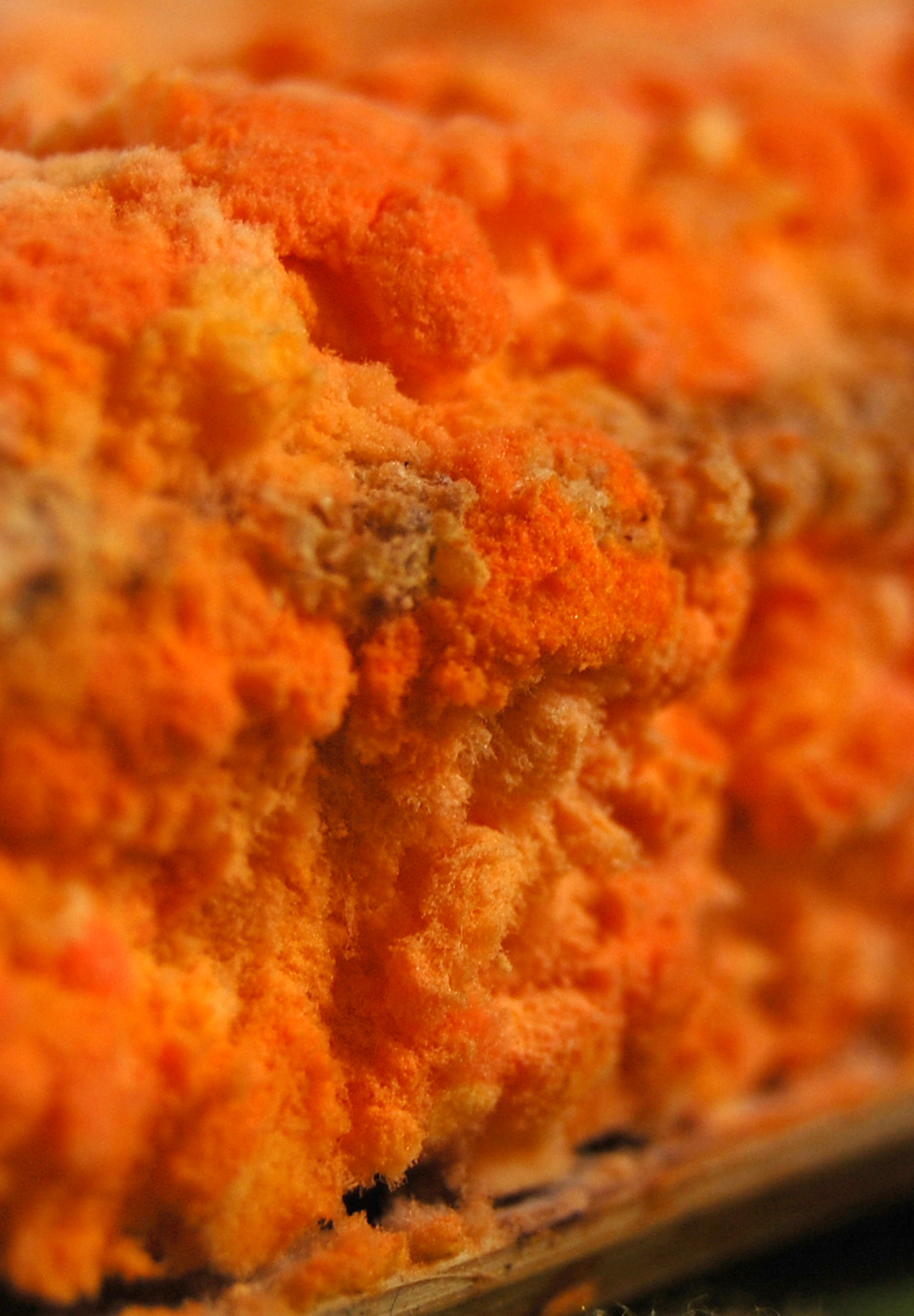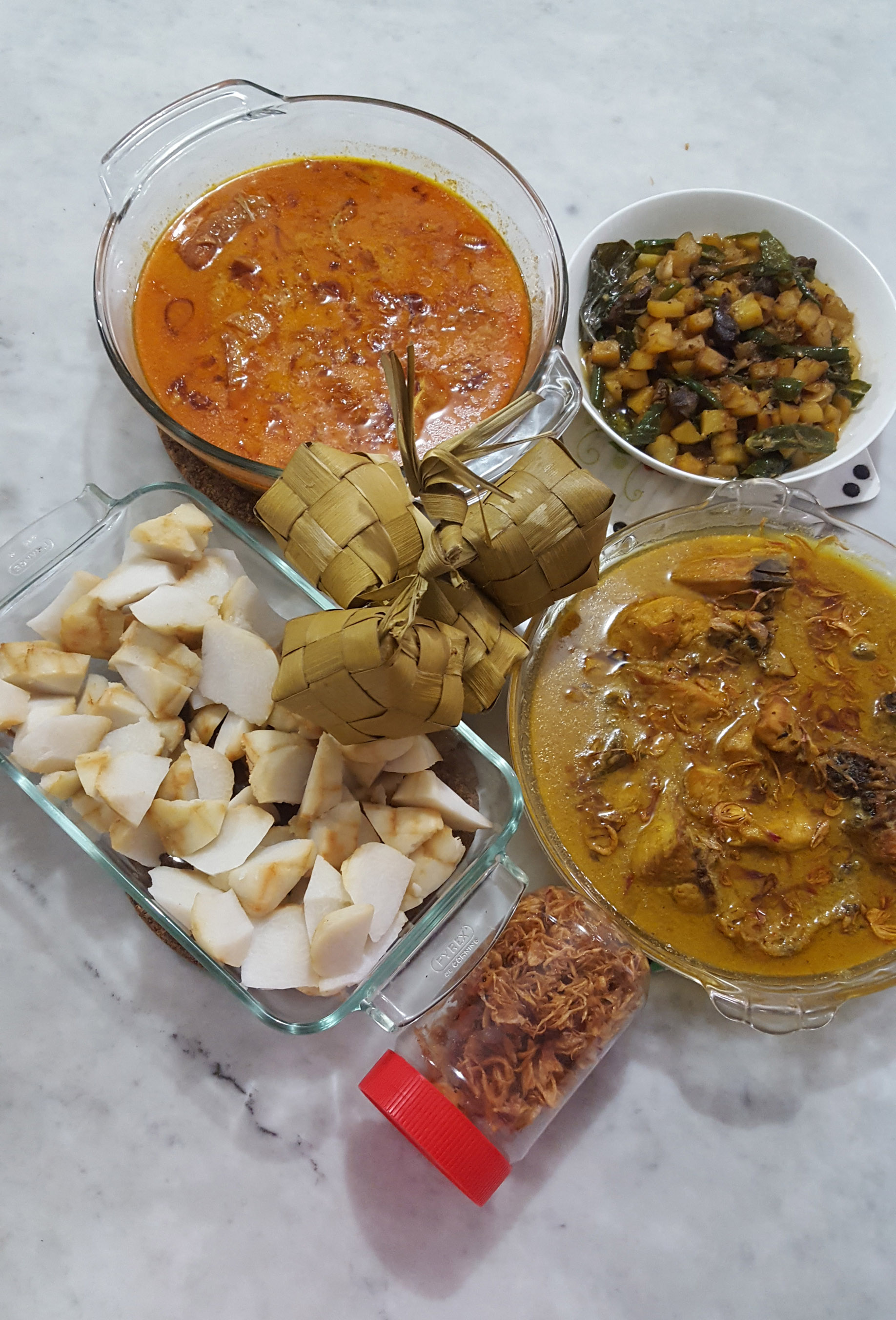|
Oncom
Oncom ( Aksara Sunda: ; IPA: ) is one of the traditional staple foods of West Java (Sundanese) cuisine of Indonesia. There are two kinds of oncom: red oncom and black oncom. Oncom is closely related to tempeh; both are foods fermented using mold. Usually oncom is made from the by-products from the production of other foods: soy pulp remains from making tofu, peanut press cake remains after the oil has been pressed out, cassava tailings when extracting the starch ( ''pati singkong''), coconut press cake remaining after oil has been pressed out or when coconut milk has been produced. Since oncom production uses by-products to make food, it increases the economic efficiency of food production. Red oncom has been found to reduce the cholesterol levels of rats. Black oncom is made by using ''Rhizopus oligosporus'' while red oncom is made by using ''Neurospora intermedia'' var. ''oncomensis''. It is the only human food produced from ''Neurospora''. Toxicity In the production of onc ... [...More Info...] [...Related Items...] OR: [Wikipedia] [Google] [Baidu] |
Sundanese Cuisine
Sundanese cuisine is the cuisine of the Sundanese people of Western Java, and Banten, Indonesia. It is one of the most popular foods in Indonesia. Sundanese food is characterised by its freshness; the famous lalab eaten with sambal and also karedok demonstrate the Sundanese fondness for fresh raw vegetables. Unlike the rich and spicy taste, infused with coconut milk and curry of Minangkabau cuisine, the Sundanese cuisine displays the simple and clear taste; ranged from savoury salty, fresh sourness, mild sweetness, to hot and spicy. Sambal terasi is the most important and the most common condiment in Sundanese cuisine, and eaten together with lalab or fried tofu and tempeh. Sayur Asem vegetable tamarind soup is probably the most popular vegetable soup dish in Sundanese cuisine. Another popular soup is Soto Bandung, a soup of beef and daikon radish, and mie kocok noodle soup with beef meat and '' kikil''. Ingredients Fresh water fishes such as carp, gourami, tilapia and cat ... [...More Info...] [...Related Items...] OR: [Wikipedia] [Google] [Baidu] |
Pepes Oncom
''Pepes'' is an Indonesian cooking method using banana leaves as food wrappings. The banana-leaf package containing food is secured with ''lidi seumat'' (a small nail made from the central ribs of coconut leaves), and then steamed or grilled on charcoal. This cooking technique allows the rich spice mixture to be compressed against the main ingredients inside the individual banana-leaf package while being cooked, and also adds a distinct aroma of cooked or burned banana leaf. Although being cooked simultaneously with food, the banana leaf is a non-edible material and is discarded after consuming the food. Etymology The cooking technique employing banana leaf as the wrapper is widely distributed throughout Indonesia and it is known in many names in several regional languages: ''pais'' in Sundanese, ''brengkesan'' in Javanese, ''brengkes'' in Palembang, ''pelasan'' in Javanese-Osing, ''palai'' in Minangkabau, and ''payeh'' in Acehnese. The common Indonesian name ''pepes'' was der ... [...More Info...] [...Related Items...] OR: [Wikipedia] [Google] [Baidu] |
Neurospora
''Neurospora'' is a genus of Ascomycete fungi. The genus name, meaning "nerve spore" refers to the characteristic striations on the spores that resemble axons. The best known species in this genus is ''Neurospora crassa'', a common model organism in biology. ''Neurospora intermedia'' var. ''oncomensis'' is believed to be the only mold belonging to ''Neurospora'' which is used in food production (to make oncom). Characteristics ''Neurospora'' species are molds with broadly spreading colonies, with abundant production of ascomata. Ascomata are superficial or immersed, perithecial and ostiolate or cleistothecial and non-ostiolate, hairy or glabrous, dark coloured. Peridium membranaceous, asci cylindrical, clavate or subspherical, with a persistent or evanescent wall, usually with a thickened and non-amyloid annular structure at the apex, usually 8-spored. Ascospores broadly fusiform, ellipsoidal, or nearly spherical, unicellular, hyaline to yellowish brown or olive-brown, becomin ... [...More Info...] [...Related Items...] OR: [Wikipedia] [Google] [Baidu] |
Neurospora Intermedia
''Neurospora'' is a genus of Ascomycete fungi. The genus name, meaning "nerve spore" refers to the characteristic striations on the spores that resemble axons. The best known species in this genus is ''Neurospora crassa'', a common model organism in biology. '' Neurospora intermedia'' var. ''oncomensis'' is believed to be the only mold belonging to ''Neurospora'' which is used in food production (to make oncom). Characteristics ''Neurospora'' species are molds with broadly spreading colonies, with abundant production of ascomata. Ascomata are superficial or immersed, perithecial and ostiolate or cleistothecial and non-ostiolate, hairy or glabrous, dark coloured. Peridium membranaceous, asci cylindrical, clavate or subspherical, with a persistent or evanescent wall, usually with a thickened and non-amyloid annular structure at the apex, usually 8-spored. Ascospores broadly fusiform, ellipsoidal, or nearly spherical, unicellular, hyaline to yellowish brown or olive-brown, beco ... [...More Info...] [...Related Items...] OR: [Wikipedia] [Google] [Baidu] |
Tempeh
Tempeh or tempe (; jv, ꦠꦺꦩ꧀ꦥꦺ, témpé, ) is a traditional Indonesian food made from fermented soybeans. It is made by a natural culturing and controlled fermentation process that binds soybeans into a cake form. A fungus, ''Rhizopus oligosporus'' or ''Rhizopus oryzae'', is used in the fermentation process and is also known as tempeh starter. It is especially popular on the island of Java, where it is a staple source of protein. Like tofu, tempeh is made from soybeans, but it is a whole-soybean product with different nutritional characteristics and textural qualities. Tempeh's fermentation process and its retention of the whole bean give it a higher content of protein, dietary fiber, and vitamins. It has a firm texture and an earthy flavor, which becomes more pronounced as it ages. Etymology The term ''tempe'' is thought to be derived from the Old Javanese , a whitish food made of fried batter made from sago or rice flour which resembles ''rempeyek''. The histori ... [...More Info...] [...Related Items...] OR: [Wikipedia] [Google] [Baidu] |
Soy Pulp
''Okara'', soy pulp, or tofu dregs is a pulp consisting of insoluble parts of the soybean that remain after pureed soybeans are filtered in the production of soy milk and tofu. It is generally white or yellowish in color. It is part of the traditional cuisines of Japan, Korea, and China. Since the 20th century, it has been used in the vegetarian cuisines of Western nations. It is called ''dòuzhā'' or ''dòufuzhā'' in Chinese, ''okara'' in Japanese, and ''biji'' or ''kongbiji'' in Korean. Okara is the oldest of three basic types of soy fiber. The other two are soy bran (finely ground soybean hulls) and soy cotyledon/isolate fiber (the fiber that remains after making isolated soy protein, also called "soy protein isolate"). Production Okara is a food by-product from tofu and soy drink production.David B. Haytowitz and Ruth H. Matthews for the USDA Human Nutrition Information Service December 198Agriculture Handbook No. 8-16. Composition of Foods: Legumes and Legume Products ... [...More Info...] [...Related Items...] OR: [Wikipedia] [Google] [Baidu] |
Indonesian Cuisine
Indonesian cuisine is a collection of various regional culinary traditions that formed the archipelagic nation of Indonesia. There are a wide variety of recipes and cuisines in part because Indonesia is composed of approximately 6,000 populated islands of the total 17,508 in the world's largest archipelago,"Indonesian Cuisine." . Accessed July 2011. [...More Info...] [...Related Items...] OR: [Wikipedia] [Google] [Baidu] |
Fermentation (food)
In food processing, fermentation is the conversion of carbohydrates to alcohol or organic acids using microorganisms—yeasts or bacteria—under anaerobic (oxygen-free) conditions. Fermentation usually implies that the action of microorganisms is desired. The science of fermentation is known as zymology or zymurgy. The term "fermentation" sometimes refers specifically to the chemical conversion of sugars into ethanol, producing alcoholic drinks such as wine, beer, and cider. However, similar processes take place in the leavening of bread (CO2 produced by yeast activity), and in the preservation of sour foods with the production of lactic acid, such as in sauerkraut and yogurt. Other widely consumed fermented foods include vinegar, olives, and cheese. More localised foods prepared by fermentation may also be based on beans, grain, vegetables, fruit, honey, dairy products, and fish. History and prehistory Natural fermentation precedes human history. Since ancient times, h ... [...More Info...] [...Related Items...] OR: [Wikipedia] [Google] [Baidu] |
Indonesia
Indonesia, officially the Republic of Indonesia, is a country in Southeast Asia and Oceania between the Indian and Pacific oceans. It consists of over 17,000 islands, including Sumatra, Java, Sulawesi, and parts of Borneo and New Guinea. Indonesia is the world's largest archipelagic state and the 14th-largest country by area, at . With over 275 million people, Indonesia is the world's fourth-most populous country and the most populous Muslim-majority country. Java, the world's most populous island, is home to more than half of the country's population. Indonesia is a presidential republic with an elected legislature. It has 38 provinces, of which nine have special status. The country's capital, Jakarta, is the world's second-most populous urban area. Indonesia shares land borders with Papua New Guinea, East Timor, and the eastern part of Malaysia, as well as maritime borders with Singapore, Vietnam, Thailand, the Philippines, Australia, Palau, and India ... [...More Info...] [...Related Items...] OR: [Wikipedia] [Google] [Baidu] |
Rhizopus Oligosporus
''Rhizopus oligosporus'' is a fungus of the family Mucoraceae and is a widely used starter culture for the production of tempeh at home and industrially. As the mold grows it produces fluffy, white mycelia, binding the beans together to create an edible "cake" of partly catabolized soybeans. The domestication of the microbe is thought to have occurred in Indonesia several centuries ago. ''R. oligosporus'' is the preferred starter culture for tempeh production for several reasons. It grows effectively in the warm temperatures () which are typical of the Indonesian islands; it exhibits strong lipolytic and proteolytic activity, creating desirable properties in tempeh; and it produces metabolites that allows it to inhibit and thus outcompete other molds and gram-positive bacteria, including the potentially harmful ''Aspergillus flavus'' and '' Staphylococcus aureus''. ''R. oligosporus'' is at present considered to be a domesticated form of '' Rhizopus microsporus'', resulting i ... [...More Info...] [...Related Items...] OR: [Wikipedia] [Google] [Baidu] |
Aspergillus Flavus
''Aspergillus flavus'' is a saprotrophic and pathogenic fungus with a cosmopolitan distribution. It is best known for its colonization of cereal grains, legumes, and tree nuts. Postharvest rot typically develops during harvest, storage, and/or transit. Its specific name ''flavus'' derives from the Latin meaning yellow, a reference to the frequently observed colour of the spores. ''A. flavus'' infections can occur while hosts are still in the field (preharvest), but often show no symptoms (dormancy) until postharvest storage or transport. In addition to causing preharvest and postharvest infections, many strains produce significant quantities of toxic compounds known as mycotoxins, which, when consumed, are toxic to mammals. ''A. flavus'' is also an opportunistic human and animal pathogen, causing aspergillosis in immunocompromised individuals. Hosts ''Aspergillus flavus'' is found globally as a saprophyte in soils and causes disease on many important agriculture crops. Common ... [...More Info...] [...Related Items...] OR: [Wikipedia] [Google] [Baidu] |
Mold (fungus)
A mold () or mould () is one of the structures certain fungi can form. The dust-like, colored appearance of molds is due to the formation of spores containing fungal secondary metabolites. The spores are the dispersal units of the fungi. Not all fungi form molds. Some fungi form mushrooms; others grow as single cells and are called microfungi (for example yeasts). A large and taxonomically diverse number of fungal species form molds. The growth of hyphae results in discoloration and a fuzzy appearance, especially on food. The network of these tubular branching hyphae, called a mycelium, is considered a single organism. The hyphae are generally transparent, so the mycelium appears like very fine, fluffy white threads over the surface. Cross-walls (septa) may delimit connected compartments along the hyphae, each containing one or multiple, genetically identical nuclei. The dusty texture of many molds is caused by profuse production of asexual spores ( conidia) formed by di ... [...More Info...] [...Related Items...] OR: [Wikipedia] [Google] [Baidu] |



_3.jpg)

.jpg)

